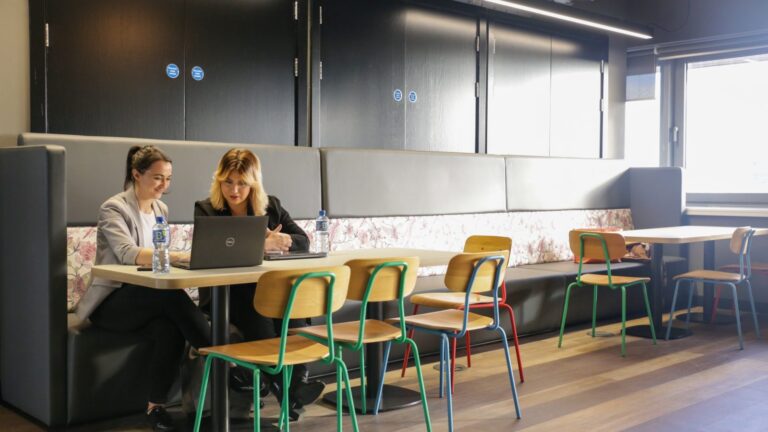
The 5 Big Work Personalities: Meeting Their Needs With Office Design.
Date
3 December 2021
Read length
3 min
Traditionally, office interior design has centred around organisational brand, corporate identity and a very homogenous user-demographic. Now, as businesses make sense of post-Covid behaviours and the desire for hybrid-working, there are 5 key personality traits that must be reflected in modern workplace design.
While the pandemic certainly created a sense of community and shared experience – it also sought to highlight the very different needs of employees and their expectations of work. Consequently the design of the workplace must respond – cue ‘human-centric’ office design; workplace design borne out of the diverse and complex needs of your people. It’s an approach which, coupled with a strong diversity and inclusion strategy, stands to improve organisational culture and performance dramatically.
Catering for the needs of each employee individually is not realistic nor necessary. Instead, an effective method uses team personality profiles to identify the types of work settings needed so people can work effectively and successfully.
There are five principle personality types which must be understood and catered for within office interior design and office refurbishment projects. In doing so, it will help to create motivated, happy and support workforces and importantly, identify how ready they are for change, whether that’s in relation to redesign of the workspace itself or wider organisational change down the line.
Here, we consider the most appropriate types of workspaces for each of the Big Five personality traits:
- Extraversion: Teams scoring highly on the extraversion scale thrive from social interaction during the working day. Having social and breakout areas in close proximity will help them to effectively focus their energy. They will also thrive in an environment where they can collaborate with their teams at shared workstations. More introverted teams typically find interaction with groups exhausting, therefore access to focus booths, quiet spaces and enclosed workstations enables them to work privately when required.
- Agreeableness: Teams scoring highly in agreeableness are drawn towards the interests of their colleagues, engaging in discussion and supporting them where they can. Open spaces conducive with free collaboration, as well as knowledge/idea banks, informal meeting areas and plenty of whiteboards/ digital idea capture screens are all important to this personality.
- Conscientiousness: Highly conscientious teams place a high value on being able to fulfil their job role tasks to a high standard. Similar to the spaces for introverts, access to focus or dedicated quiet spaces supports their drive to get their work completed. They value structure and predictability; therefore, a desk-booking system or familiar workplace neighbourhood would work well.
- Openness to experience: Teams that are open to experience are typically the more creative and visual. These teams flourish when provided with spaces to brainstorm with colleagues and be dynamic as a group. Consider visual cues for creativity, such as colour, plants and typography – especially the inclusion of flexible settings that allow them to reconfigure their environment to suit their needs.
- Neuroticism: Those scoring highly in neuroticism are likely to feel their emotions strongly. They are likely to worry about disappointing colleagues, so need spaces to focus on completing their own work. As with introverts and conscientious types, spaces that allow these colleagues to focus quietly put them at ease, without feeling too much pressure of being in the open.
Establishing psychological personalities not only allows organisations to better understand how their people think and approach their work – but also identifies the amenities and spaces they need to thrive individually and collectively. In turn this helps to inform the very layout of an office’s interior design.
Organisations on the cusp of workplace transformation can only make informed and popular choices around the return to work if they know their people and how the pandemic has changed their needs. This is how employers will bring renewed purpose to their workplaces and make them relevant, vibrant and effective in equal measure.
If you’re about to transform your workplace or embark on widespread organisational change and you’d like to know how each of these personalities will adapt – download our 2021 Legacy Workplaces report.
See how we could help with your new office interior design or office design and build project here
Get in touch
We love nothing better than talking all things workplace and design – got a question, potential project or just need some guidance?
Drop us a note…





